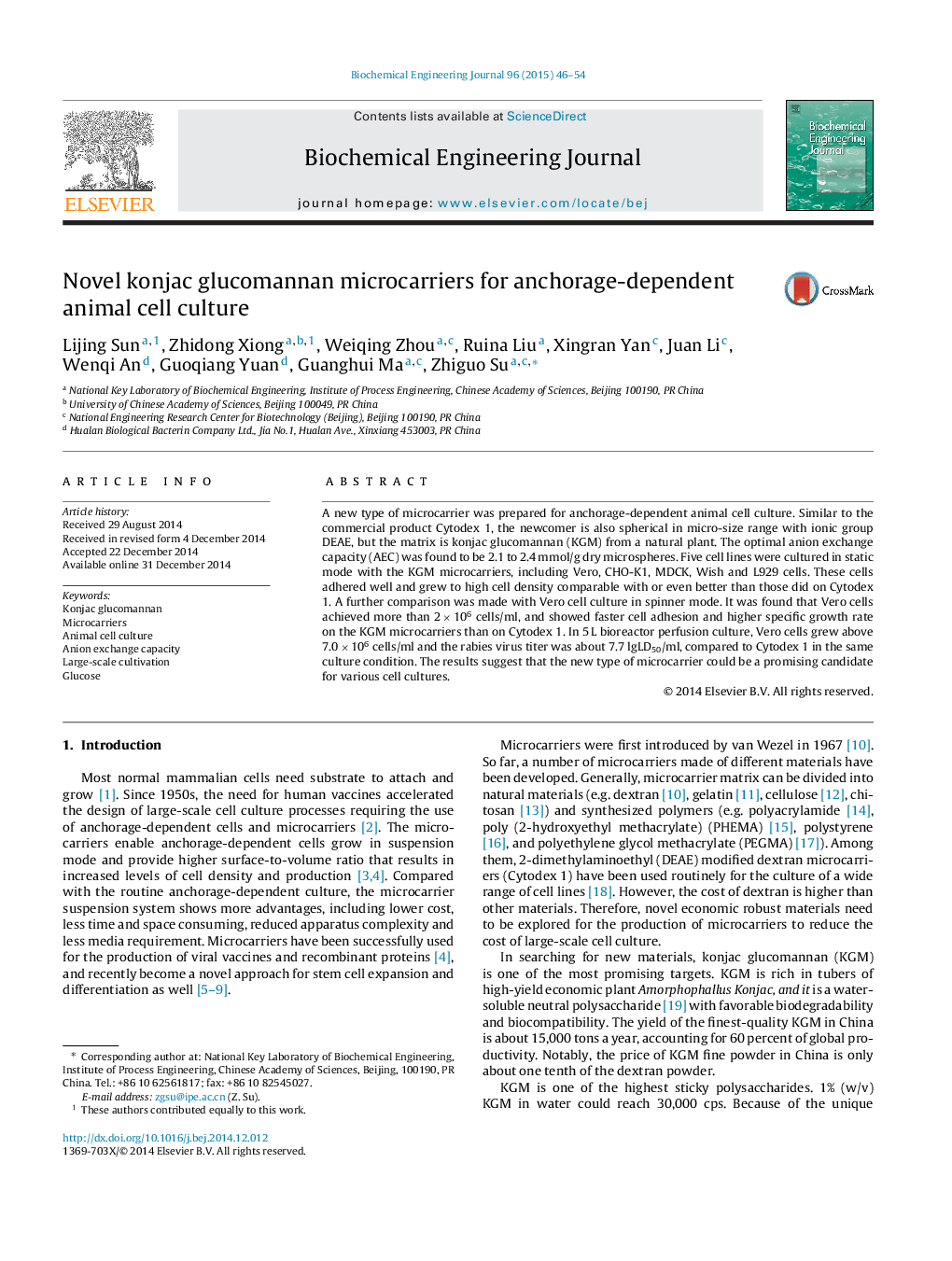| Article ID | Journal | Published Year | Pages | File Type |
|---|---|---|---|---|
| 2984 | Biochemical Engineering Journal | 2015 | 9 Pages |
•A KGM-based microcarrier was prepared for anchorage-dependent animal cell culture.•Five cell lines adhered well and grew to high cell density on KGM microcarriers.•Vero cells achieved more than 2 × 106 cells/ml on KGM microcarriers in spinner culture.•Cell density and rabies virus titer were comparable in KGM and Cytodex 1 culture.•The KGM microcarrier could be a promising candidate for various cell cultures.
A new type of microcarrier was prepared for anchorage-dependent animal cell culture. Similar to the commercial product Cytodex 1, the newcomer is also spherical in micro-size range with ionic group DEAE, but the matrix is konjac glucomannan (KGM) from a natural plant. The optimal anion exchange capacity (AEC) was found to be 2.1 to 2.4 mmol/g dry microspheres. Five cell lines were cultured in static mode with the KGM microcarriers, including Vero, CHO-K1, MDCK, Wish and L929 cells. These cells adhered well and grew to high cell density comparable with or even better than those did on Cytodex 1. A further comparison was made with Vero cell culture in spinner mode. It was found that Vero cells achieved more than 2 × 106 cells/ml, and showed faster cell adhesion and higher specific growth rate on the KGM microcarriers than on Cytodex 1. In 5 L bioreactor perfusion culture, Vero cells grew above 7.0 × 106 cells/ml and the rabies virus titer was about 7.7 lgLD50/ml, compared to Cytodex 1 in the same culture condition. The results suggest that the new type of microcarrier could be a promising candidate for various cell cultures.
